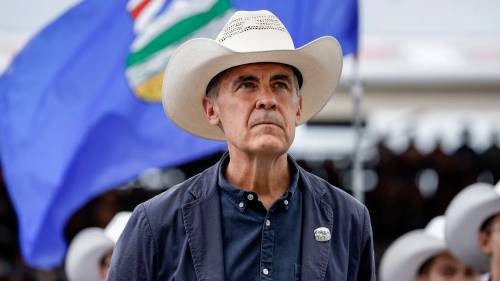As Donald Trump prepares to retake the White House, Canada’s approach to trade negotiations faces intense scrutiny. Former Bank of Canada governor Mark Carney has warned that Ottawa needs a “nimble” strategy to navigate the complex objectives of Trump’s economic agenda.
“We need to understand Trump has multiple objectives when it comes to trade,” Carney explained during a recent economic forum in Toronto. “There’s the economic dimension, but also the political calculation and the security angle. Our negotiating stance must be responsive to all three.”
The stakes couldn’t be higher for Canada, with nearly 75% of its exports heading to the U.S. market, representing approximately $400 billion in annual trade. The integrated supply chains built over decades under NAFTA and its successor agreement now face potential disruption from Trump’s promised tariff regime.
Trump’s campaign pledge of universal 10% tariffs on imports—and potentially higher duties of 60% on Chinese goods—would dramatically reshape North American commerce. Canadian industries from automotive manufacturing to agricultural exports would face immediate pressure under such a scenario.
Deputy Prime Minister Chrystia Freeland, who led Canada’s team during the contentious USMCA negotiations in Trump’s first term, has already begun assembling an economic response team. Sources within the government indicate they’re preparing multiple contingency plans based on varying degrees of protectionist measures.
“The difficulty is determining which Trump we’ll be dealing with,” said Christopher Sands, director of the Wilson Center’s Canada Institute. “Will it be the dealmaker looking for quick wins, or the economic nationalist determined to reshape global trade patterns? Canadian officials need strategies for both.”
Business leaders across Canada have expressed growing concern. The Business Council of Canada recently surveyed its members, finding that 82% rank U.S. trade relations as their top concern for 2025. Many companies are already reassessing investment plans and supply chain configurations.
In Windsor, Ontario, where the auto industry represents over 20,000 jobs, uncertainty permeates the economic landscape. “We’ve weathered uncertainty before, but this feels different,” said Maria Resendes, who owns a small auto parts manufacturing company. “The integration between our operations and Michigan plants is so complete that tariffs would force impossible choices.”
The challenge for Canadian negotiators extends beyond traditional trade dynamics. Trump’s team has indicated they view trade as a national security lever, particularly regarding critical minerals and energy resources. This creates both vulnerability and potential bargaining power for Canada, which supplies significant amounts of uranium, aluminum, and hydroelectric power to U.S. markets.
Carney, whose international experience includes leading the Bank of England, emphasized that Canada must leverage its position as a reliable security partner. “In a fractured world, Canada’s stability and resource endowment become strategic assets. Our negotiating position should emphasize this broader relationship beyond simple trade metrics.”
Economic analysts note that Trump’s first-term approach to Canada was ultimately more moderate than his rhetoric suggested. The USMCA preserved most of NAFTA’s core provisions while adding new rules on digital trade and labor standards.
“The real question is whether the second Trump administration will be more extreme than the first,” said Maryscott Greenwood of the Canadian American Business Council. “The personnel choices and early executive actions will tell us a lot about the trajectory.”
Canadian officials are quietly conducting outreach to potential Trump administration appointees and congressional allies. They’re emphasizing data showing the mutual benefit of bilateral trade—approximately 9 million American jobs depend on commerce with Canada, according to Statistics Canada and U.S. Commerce Department figures.
Prime Minister Justin Trudeau has publicly maintained that Canada will defend its economic interests while seeking constructive engagement. Behind closed doors, his government is preparing for difficult negotiations, including potential sector-specific exemptions, regulatory harmonization offers, and increased defense spending as bargaining chips.
The coming months will test Canada’s diplomatic and economic resilience. As Carney put it, “Canada needs to approach these talks with clarity about our red lines but flexibility on how we achieve our core objectives. We’re entering a period where economic diplomacy will require unprecedented creativity.”
For ordinary Canadians, the uncertainty adds another layer of economic concern amid already challenging conditions. From Vancouver’s port workers to Quebec’s aluminum smelters, the interconnected nature of North American commerce means Trump’s trade policies will be felt throughout the Canadian economy. How effectively Canada navigates this relationship may define its economic trajectory for years to come.






